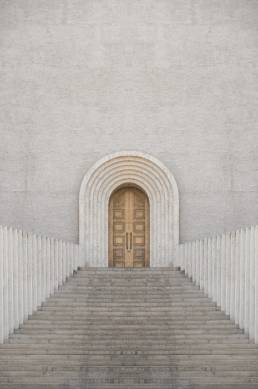Breath has been defined by the ancient masters as the door between the conscious and the unconscious. It is the key that allows us to access our autonomic nervous system, to calm down, feel better and regulate the heartbeat.
Breathing is a natural and spontaneous activity and it is so simple that we often take it for granted and underestimate its importance.
We are often unaware of our breathing.
Conscious breathing is a very ancient discipline. It is called Prāṇāyāma and – if practiced regularly – it can bring many benefits.
Sometimes I can’t sleep at night. To avoid being absorbed by thoughts and to help me fall asleep again, I turn to the breathing.
I usually do two types of breathing exercises, choosing one or the other, depending on my mood. In general, by the time I complete an exercise, I have already fallen asleep again.
The first exercise requires and develops some energy*. Starting with abdominal breathing, I bring the breath to my chest and then to my head imagining to let go of any thoughts and worries. Then I start again from the abdomen. I take 30 breaths and then exhale and hold my breath for about a minute and a half or as long as I can, without forcing. Then I inhale and hold my breath for about 10/15 seconds before I resume the exercise. I do three cycles of breathing at a steady pace, but without forcing. It is possible to experience a feeling of expansion and tingling in the body during and after the exercise. This is very good.
In general, before the third cycle of breathing ends, I have already fallen asleep again.
This type of breathing is part of a method proposed by Wim Hof.
Watch the videos for the technique and if you want to do the exercise led by Wim.
* It is recommended that you do this exercise on an empty stomach and avoid it while driving, in the water or in need of being alert.
The other breathing exercise is called Small Circulation. It is a meditation technique and we can summarize it as follows:
we imagine a flow of energy that goes around our torso, starting from the area located below the navel (called Dantian) to pass between the legs, go up along the central part of the back and head, go down through our profile along the central part of the torso and finally return to the point below the navel where, on the inside – according to Traditional Chinese Medicine, our reserve of energy resides.
With each inhalation, the flow begins its path and goes up along the back and head. With each exhalation, it descends along the front of the body.
In the following video you can see Master Yang Jwing-Ming showing the Small Circulation path.
There are many specifications about the Small Circulation, and different schools and masters teach it in different ways. If you don’t have experience in this field, my advice is to learn the Small Circulation live, with a good and competent teacher (not from a book or video).
In the meantime, you can try an easy breathing exercise to do at different times of the day, at home or in the office, sitting or lying down: the abdominal breathing.
Start by stopping and listening to your breathing. Is it short or deep? Do you breathe through your nose or mouth? Do you raise your shoulders while you breathe?
Use awareness. Now take a deep breath and stretch. Move freely. Then take another breath and imagine “sending it into your belly” which will “inflate”. While breathing out, you “empty your belly”. If it helps, put your hands on your belly. Breathe in slowly, making the inhalation last up to the count of 5. Breathe out slowly, making the exhalation last up to the count of 5. Keep breathing this way for two or three minutes or as long as you feel. Don’t force it. If counting up to 5 is too much or too little, adjust the count according to your needs. However, try to maintain symmetry between the time of inhalation and that of exhalation. Continue to harmonize your breathing with the movement of the belly that “inflates” in the inhalation and “deflates” in the exhalation. Feel that your breathing becomes a gentle and rhythmic movement, almost a wave that massages all of your internal organs and brings you wellness.
Happy breathing!
Wave photo courtesy of Alexander Tsang on Usplash
